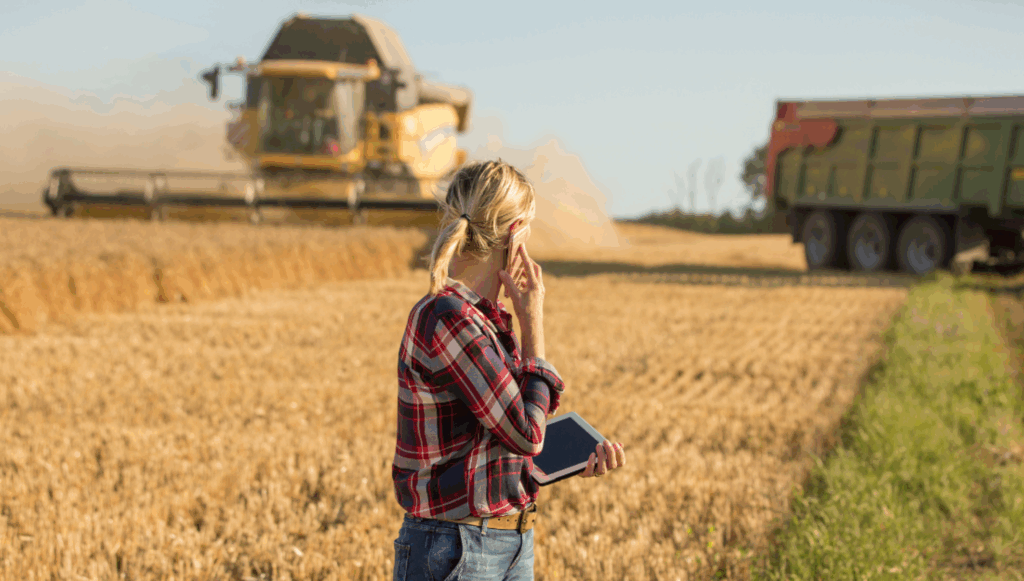Harvest is one of the most high-risk periods on a broadacre farm. Long hours, heat, heavy machinery, contractors, and seasonal workers all increase the risk of incidents. Taking time now to get safety systems ready will protect your people, your business, and your harvest.
1. Machinery & Equipment
- Pre-harvest inspections: Check all harvesters, field bins, chaser bins, tractors, stationary engines, augers, silos, fire equipment, trucks, trailers and utes. Record and action repairs before use.
- Guards and safety features: Ensure shields, guards, and emergency stop devices are in place and functional.
- Maintenance logs: Keep and maintain documented servicing and inspection records for each machine.
- Licensing & competency: Confirm operators hold the appropriate licences.
2. Inductions & Training
- Harvest induction: Cover site-specific rules, PPE requirements, communication and emergency procedures.
- High-risk tasks: Provide additional training for chemical handling, confined spaces, and working at heights. Ensure that workers have completed the appropriate mandatory training for working at heights and confined spaces, including having completed any mandatory refreshers.
- Young/inexperienced workers: Ensure extra supervision and practical demonstrations for new or younger workers.
- Contractors: Ensure contractors receive the same induction as employees and understand your farm’s WHS management system.
3. Emergency Planning
- Emergency contacts: Post numbers for fire, ambulance, and local hospitals at prominent locations.
- First aid: Stock kits in vehicles and machinery; check expiry dates on items. Nominate trained first aiders.
- Fire safety: Inspect extinguishers and fire fighting units. Ensure staff know fire evacuation procedures and muster points, and have requested fire report SMS from the appropriate shires they are working in.
- Incident response: Have a clear process for reporting and recording incidents or near misses.
4. Fatigue & Wellbeing
- Roster design: Limit long consecutive shifts and enforce reasonable breaks.
- Heat stress management: Provide cool drinking water, shaded rest areas, and encourage hydration. Ensure that where air conditioning is provided in machinery cabs, it is operational.
- Mental health: Recognise stress during harvest. Ensure supervisors check in with workers regularly.
- Drugs & alcohol: Enforce a clear zero-tolerance policy for impairment at work.
5. Compliance & Record-Keeping
- WHS Management System: Review and update your farm’s system before harvest begins.
- Risk assessments: Document hazards specific to harvest activities and how they’re controlled.
- Induction records: Keep signed induction checklists for every worker.
- Incident register: Maintain a log of all injuries, near misses, and hazards reported.
6. During Harvest
- Daily pre-start checks: Supervisors should confirm machinery checks, rosters, and hazard reports at the start of each shift.
- Toolbox talks: Hold short, regular meetings to update workers on changing conditions or hazards.
- Monitor fatigue: Watch for signs of exhaustion, especially with long hours or night work. Maintain communication with workers and contractors throughout each day.
- Continuous improvement: Encourage reporting of hazards and near misses so you can act before accidents occur.
Safety preparation is just as critical as getting machinery ready. A strong WHS management system reduces risks, keeps workers safe, and ensures harvest isn’t disrupted by avoidable incidents.
ProcessWorxAg has extensive experience working with farms to ensure they meet their HR and Safety obligations. Farmers can have peace of mind that a team of experts is helping their business, so you can focus on farming. If you have queries about anything above and want advice personalised to your business, contact us on (08) 9316 9896, or email enquiries@processworx.com.au
Follow ProcessWorx on LinkedIn, Facebook and Instagram, and visit our website to keep up with the latest HR and Safety news.




